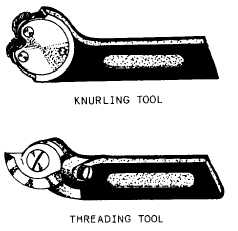Figure 9-6.—Knurling and threading toolholders.
This arrangement permits feeding the tool to the
work at any angle (determined by the angular setting of
the swivel section). The graduated collars on the
crossfeed and compound rest feed screws read in
thousandths of an inch for fine adjustment in regulating
the depth of cut.
Accessories and Attachments
Accessories are the tools and equipment used in
routine lathe machining operations. Attachments are
special fixtures that may be mounted on the lathe to
expand the use of the lathe to include taper cutting,
milling, and grinding. Some of the common accessories
and attachments are described in the following
paragraphs.
TOOL POST.—The sole purpose of the tool post is
to provide a rigid support for the tool. It is mounted in
the T-slot of the compound rest. A forged tool or a
toolholder is inserted in the slot in the tool post. By
tightening a setscrew, you will firmly clamp the whole
unit in place with the tool in the desired position.
TOOLHOLDERS—Some
of
the
common
toolholders used in lathe work are illustrated in figure
9-5. Notice the angles at which the tool bits are set in the
various holders. These angles must be considered with
respect to the angles ground on the tools and the angle
that the toolholder is set with respect to the axis of the
work.
Two types of toolholders that differ slightly from the
common toolholders are those used for threading and
knurling. (See fig. 9-6.)
The threading toolholder has a formed cutter which
needs to be ground only on the top surface for
sharpening. Since the thread form is accurately shaped
Figure 9-7.—Lathe tools and their applications.
over a large arc of the tool, as the surface is worn away
by grinding, the cutter can be rotated to the correct
position and secured by the setscrew.
A knurling toolholder carries two knurled rollers
which impress their patterns on the work as it revolves.
The purpose of the knurling tool is to provide a
roughened surface on round metal parts, such as knobs,
to give a better grip in handling. The knurled rollers
come in a variety of patterns.
ENGINE LATHE TOOLS.—Figure 9-7 shows the
most popular shapes of ground lathe cutter bits and their
applications. In the following paragraphs we will
discuss each of the types shown.
Left-Hand Turning Tool.—This tool is ground for
machining work when it is fed from left to right, as
indicated in figure 9-7, view A. The cutting edge is on
the right side of the tool, and the top of the tool slopes
down away from the cutting edge.
9-5




